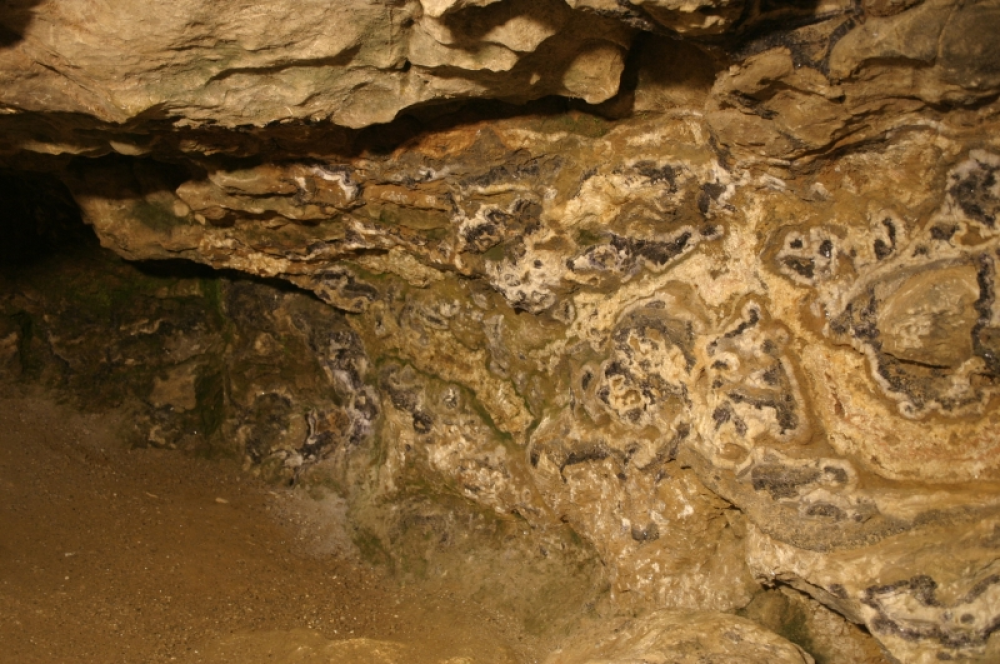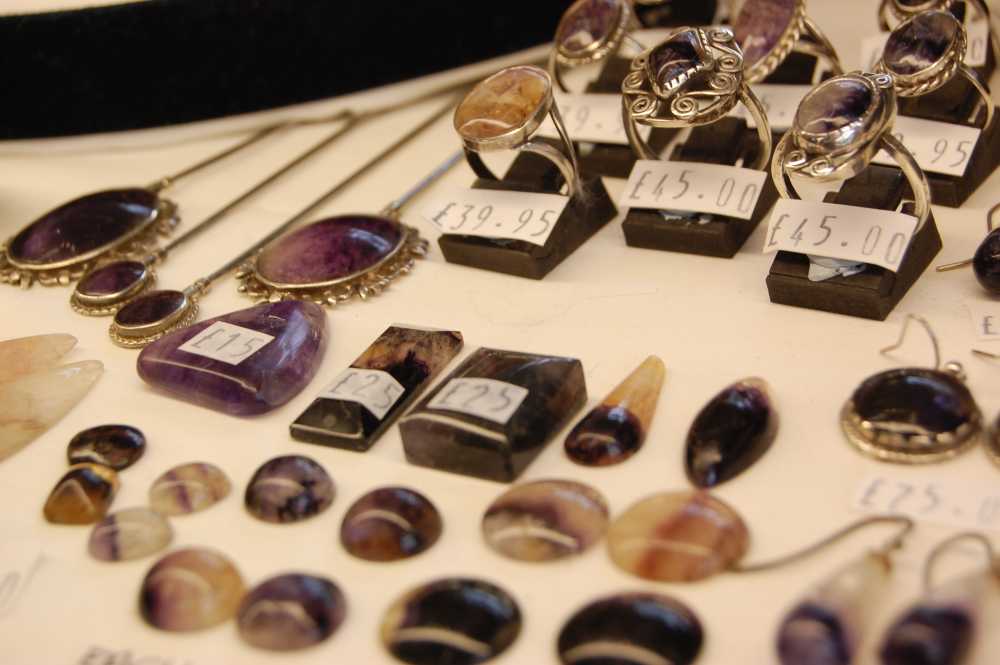Veins of a blue-and-yellow banded mineral run through the Derbyshire hillside in Britain’s Peak District, a rare mineral we know today as Blue John. It’s thought to only be found in two locations across the planet, so while it’s only semi-precious, its scarcity makes it a valuable find.
Blue John is a variety of fluorite, a mineral composed primarily of calcium fluoride (CaF2). Fluorite belongs to the group of minerals known as fluorspars. Found along pipe veins in Treak Cliff Cavern and the Blue John Cavern in Derbyshire, UK, Blue John is often spotted alongside deposits of yellow fluorite, barytes, pyrites, calcite, galena, and quartz.
It displays some diversity within its coloration, being made up of dark blue, pale blue, and yellow bands. The exact source of its midnight-blue hue was debated for a long time, with possible suggestions including radioactive material. However, field, laboratory, and experimental evidence have suggested it’s the result of bituminous inclusions, a type of organic material made up of the ancient remains of organic matter like plants and microbes.

Veins of Blue John in Blue John Cavern, Derbyshire, UK.
Much of the mineral was lost during the First World War when fluorspar became a coveted material as a flux in blast furnaces. Blue John was subsequently mined for this purpose, stripping the region of large veins of the precious stone.
As a beautiful mineral, it’s coveted for jewelry and ornaments, with examples online including goblets and carved panther heads. According to Blue John Stone, some areas “off the beaten track” are still mined for small-scale jewelry, but larger pieces are no longer made as most of the substantial veins have already been tapped.
That said, we are still finding new veins of Blue John in recent times. Back in 2013, a vein that had long been considered “lost” was rediscovered. It was lost following the death of miner John Royce back in 1945, who passed before having a chance to show the landowners at the time the “ins and outs” of Treak Cliff Cavern.
For 68 years, his predecessors failed to find the vein – until January 2013, when a prospecting mission off the Witch’s Cave revealed something interesting hiding beneath some clay.

Blue John jewelry on sale at Treak Cliff Cavern, Derbyshire, England, made from stone mined there
“There was approximately a metre-length plate of crystals that we worked to clear,” said John Turner, who was present during the search, to Blue John Stone. “That first day we dug away as much as 2 tonnes of clay, and by 3pm decided to let the dripping water wash more away overnight.”
“The next morning we took better lighting into the area along with the big rock drills, but before any drilling took place we had to dig more clay. It was around 1 pm that day we first were able to drill the limestone surrounding the Blue John, by the end of the day’s drilling we had exposed more of the vein we’d ever guessed existed. Then I told Gary about the carpet and wooden batons, he told me of the lost vein of John Royce, and that he had a particular way of covering his work. By the end of the day we had exceptionally beautiful pieces of stone we had not seen at the Treak Cliff for years.”
Again, in 2015, an entirely new vein was discovered by mine manager Gary Ridley, who was testing out a new approach to mining using a stone chainsaw. “I couldn’t believe my eyes when within a few minutes I had uncovered a substantial deposit of Blue John unlike any other vein I had ever seen before,” he said.
BRB, going to fetch our mining chainsaw.
Source Link: One Of The Rarest Minerals On Earth Runs Through This Derbyshire Hillside